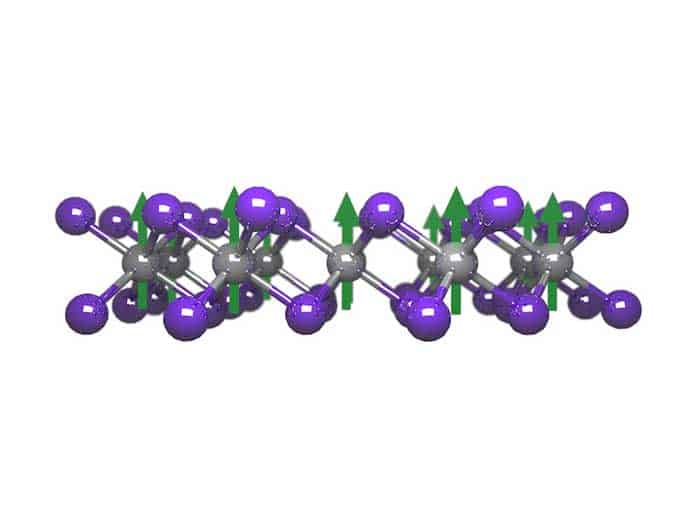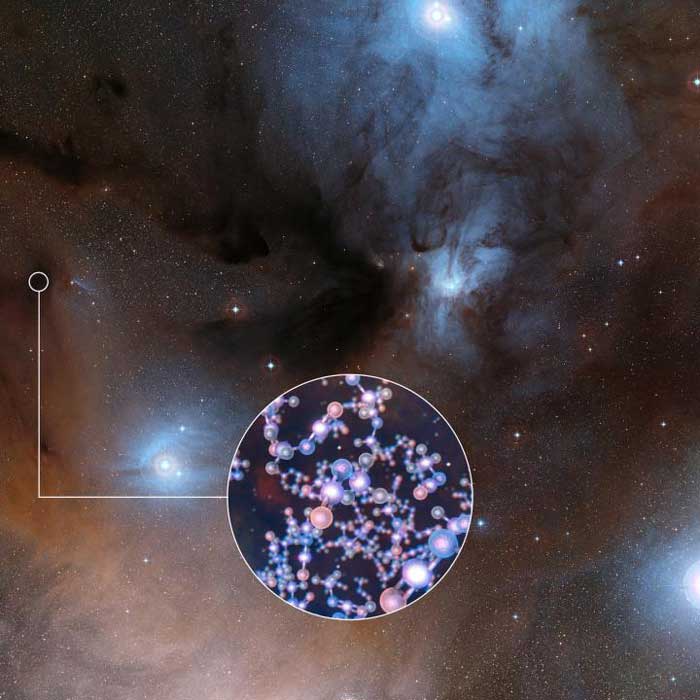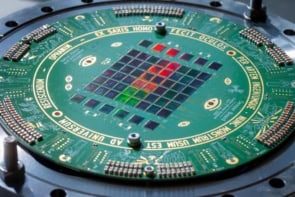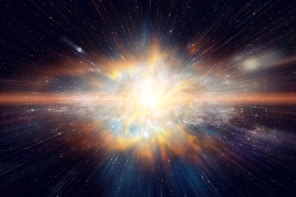Flash Physics is our daily pick of the latest need-to-know developments from the global physics community selected by Physics World‘s team of editors and reporters

Simulation of the dark universe is the largest ever
The largest virtual universe ever simulated has been created by scientists at the University of Zurich in Switzerland. Using the Piz Daint supercomputer at the Swiss National Computing Center (CSCS), Douglas Potter and colleagues generated a catalogue of 25 billion virtual galaxies from 2 trillion digital particles representing dark-matter fluid. The simulation describes the dynamics of dark matter and the formation of large-scale structures in the universe with unprecedented accuracy. Due to the team’s high-precision calculations, they have been able to account for galaxies as small as one-tenth of the Milky Way within the massive volume of the observable universe. The image above shows a section of the virtual universe a billion light-years across. The yellow represents dark-matter halos where scientists believe galaxies form and these are interconnected by dark filaments. The white areas are the lowest-density regions in the universe known as the cosmic void. The virtual catalogue will be used to calibrate experiments on the European Space Agency’s Euclid satellite, which will investigate the nature of dark matter and dark energy when launched in 2020. Potter and team’s code took 80 hours to execute and produce the simulation, which is presented in Computational Astrophysics and Cosmology. The researchers claim this is fastest time-to-solution simulation with such a high number of particles.
Ferromagnetic 2D material is a first

Researchers have observed robust ferromagnetism in an isolated 2D material for the first time. They also found that the crystal, chromium triiodide, boasts unique layer-dependent magnetic phases. The team was led by Xiadong Xu of the University of Washington in Seattle and Pablo Jarillo-Herrero from the Massachusetts Institute of Technology. They found that a single layer of the material displays ferromagnetic order below 45 K, a temperature that is only slightly lower than that for magnetism in the bulk crystal (61 K). “The magnetization forms spontaneously without applying an external magnetic field,” explains Xu. “This indicates that the magnetism in monolayer chromium triiodide is very robust. Spins lie perpendicular to the material’s crystal plane with large magneto-anisotropy. It can thus be described by the 2D Ising model of magnetism.” The team also found that the nature of the magnetic ordering depends very much on the number of layers in the system. In a bilayer, for example, the remnant magnetization in a single layer is suppressed – which implies that the two layers have oppositely oriented – antiferromagnetic – spins. In contrast, in a trilayer this property is lost and the net magnetization comes back. “The 2D crystal offers us several truly unique opportunities for exploring the fundamental physics of magnetism,” says Xu. The research is described in Nature. For more details see a longer version of this article on nanotechweb.org.
Ingredient for life found around Sun-like stars

A possible precursor to life – the organic molecule methyl isocyanate – has been detected within the triple star system IRAS 16293-2422. Two independent teams of astronomers made the discovery using the Atacama Large Millimeter/submillimeter Array (ALMA) radio telescope in Chile. A previous study using ALMA has already shown that the system of three very young “protostars” contains the sugar glycolaldehyde, which is another ingredient for life. “This star system seems to keep on giving! Following the discovery of sugars, we’ve now found methyl isocyanate,” say Niels Ligterink at the Leiden Observatory in the Netherlands and Audrey Coutens at University College London, UK – who led one of the teams. “This family of organic molecules is involved in the synthesis of peptides and amino acids, which, in the form of proteins, are the biological basis for life as we know it.” Rafael Martín-Doménech and Víctor Rivilla of the Osservatorio Astrofisico di Arcetri in Florence, who led the other team, said “We are particularly excited about the result because these protostars are very similar to the Sun at the beginning of its lifetime, with the sort of conditions that are well suited for Earth-sized planets to form. By finding prebiotic molecules in this study, we may now have another piece of the puzzle in understanding how life came about on our planet.” IRAS 16293-2422 is about 400 light-years from Earth and includes an accretion disk of material that could someday form planets. The detection is reported in two papers that are available from the European Southern Observatory, which is a partner in running ALMA.



